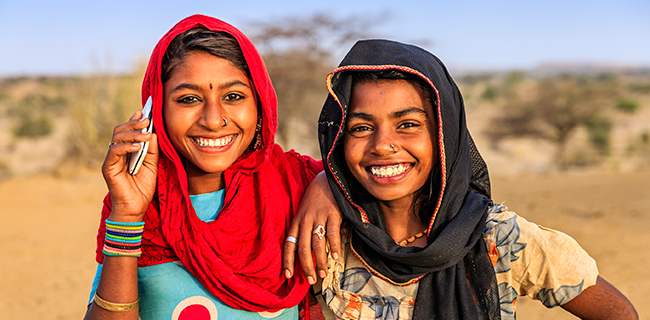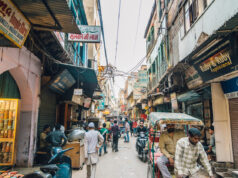Although an elusive concept, happiness is something perhaps all of us seek in some sense. Each of us has a different understanding of what happiness means to us, and how we can attain it. If you do hold that happiness is subjective then freedom to pursue this happiness is a natural next step. A conversation around that is something I want to explore in this essay.
Happiness is subjective to the individual may appear to be a self-evident fact, but some experts do not necessarily agree. Armed with the belief that it is possible and meaningful to measure, assess and correlate happiness with other factors objectively, and that the pursuit of happiness may be a national policy rather than an individual endeavour, Jeffrey Sachs and development experts started measuring National Happiness in 2012. The World Happiness Report 2022 finds that “attention to income and GDP is decreasing, and in books published since 2013, the words GDP (or the like) have appeared less frequently than the word ‘happiness’.”
The 20th of March has been proclaimed as the International Day of Happiness by the United Nations General Assembly, following a High-Level Meeting on Well-Being and Happiness and the release of the first World Happiness Report in 2012. In India, most, I believe, are reminded of the day by news headlines that highlight how India is among the unhappiest nations. They may also be reminded by memes such as the following that showed up on my Instagram feed:

Translation: “Where is India on the Happiness Index ranking? Check from the bottom”
The 2022 report lists India among the top 10 countries with largest drops in happiness from 2012 to 2021. In the 2022 report, India ranks 136 of 146 countries studied.
Happiness in the report is measured in the simplest way you might imagine – asking people how happy they are. Annually, 1000 people are surveyed in a country, and they are asked to imagine a ladder with steps numbered from 0 at the bottom and 10 at the top. The top of the ladder represents the best possible life for the respondent and the bottom of the ladder represents the worst possible life for the respondent. The respondent is then asked where they feel they stand on the ladder at this point of time. This number is then averaged for the country. The report takes into account data from 3 years, so the sample size for each country would be about 3000. The 2022 report would have data from 2019, 2020, and 2021. India’s score in the 2022 report was 3.777.
The 6 factors considered by the report that may have an impact on happiness of the people are –
(i) GDP per capita;
(ii) Social support;
(iii) Health in terms of life expectancy;
(iv) Freedom to make life choices;
(v) Generosity;
(vi) Perceptions of corruption
The report, through some simple statistical analysis, tries to find to what extent each factor determines the happiness that they have measured. Happiness in India, in 2022, was explained mostly by ‘GDP per capita’ at 31%, then by ‘freedom to make life choices’ at 17%, and least by ‘perceptions of corruption’ at 3%. Note that the national happiness figure is not an actual combination of the factors, but is measured independently, unlike indices where the quantities of the factors are either added or multiplied to arrive at a total index value.
Freedom is important in terms of its consequences – personal freedom entails that people are free to do things that they find value and happiness in as long as they respect the rights of others, and economic freedom is the greatest explanator of prosperity (another determinant of happiness). In the following sections, I thus explore what this freedom is that the report talks about and how much does it actually tell us about people’s freedom?
According to the methodology of the report, here is how ‘freedom to make life choices’ is measured:
Freedom to make life choices is the national average of binary responses (0=no, 1=yes) to the GWP question, “Are you satisfied or dissatisfied with your freedom to choose what you do with your life?”
Basically, the value of the measure is determined by the perception of the individual. The happiness explained by ‘freedom to make life choices’ has increased between 2015 and 2019 from 0.398 to 0.498, and stands at 0.647 in 2022.
There is another, very different measurement of freedom, which is more institutional – the Human Freedom Index (HFI) published by the CATO Institute and Fraser Institute. The index uses 82 distinct indicators of personal and economic freedom. HFI is constructed as a weighted average of various measures of freedom, based on how restrictive State institutions are and data on violation of freedoms.
Individual freedom as per HFI has decreased between 2015 and 2019 (diverging from the Happiness Report’s increase in ‘freedom to make life choices’). A quick calculation of the correlations between the happiness explained by ‘freedom to make life choices’ with HFI between 2015 and 2019 for India (periods when the data overlaps) tells us that the measured perceived freedom (by the World Happiness Report) has been moving in opposite direction to freedom measured by HFI. The table below shows the change in India’s freedom on particular components of the Human Freedom Index.
In the Human Freedom Index 2021, looking at 2019 data, India ranked 119 out of 165 countries, doing better than only 18% of the countries. In the World Happiness Report 2022, it performed better than 77% of the countries in terms of the ‘freedom to make life choices’ as perceived by the people.
Although it is a small sample that we are considering, this divergence is a little puzzling.
The Gallup Poll, which is the source of the data of the World Happiness Report, takes a representative sample of the country. This data is thus weighted by the size of various demographic groups – majority groups would have greater weightage than minority groups. Let us consider religious freedom. Religious freedom has reduced significantly in India, particularly for the minorities. Freedom perceived by individuals belonging to minority groups may have reduced, but if that of individuals belonging to majority groups may have increased, the net outcome as per the World Happiness Report would be an increase. This kind of measure is very utilitarian in nature, it focuses on total rather than individual components. Happiness and freedom are very virtuous, but if they are to come at the expense of rights and freedoms of others, there would be few things more vicious. The Happiness Report does say that the numbers are supposed to be more illustrative than conclusive, but the illustration may be a little biased.
A 2014 study also found only a small, although positive correlation between actual freedom and perceived freedom, while still additionally reinforcing the point that freedom (both actual or perceived) is a significant determinant of happiness.
Happiness as a matter of National Policy
On whether happiness must be a matter of national policy, I’d like to refer to what Indian economist BR Shenoy wrote in his 1957 essay My Idea of a Welfare State:
“A state where the Rule of Dharma prevails, is a welfare state, the objective of welfare here being the creation, to the extent permissible on the governmental side, of conditions facilitating the attainment of the goal of life by individuals.”
Liberty – in the personal, political and economic sense, rule of law and protection of everyone’s rights are most crucial for happiness that individuals can attain. Gandhi wrote in The Story of My Experiments with Truth, “What I want to achieve – what I have been striving and pining to achieve these thirty years is self-realisation… to attain Moksha. I live and move and have my being in pursuit of this goal.”
Happiness, and the pursuit of it, is a very individual thing. Do not let development experts convince you otherwise. Additionally, I believe that while freedom is an important means to the attainment of happiness, freedom is also a virtuous end in itself.
Read more: Educating Children with Disability: Role of Teacher Training
Post Disclaimer
The opinions expressed in this essay are those of the authors. They do not purport to reflect the opinions or views of CCS.






